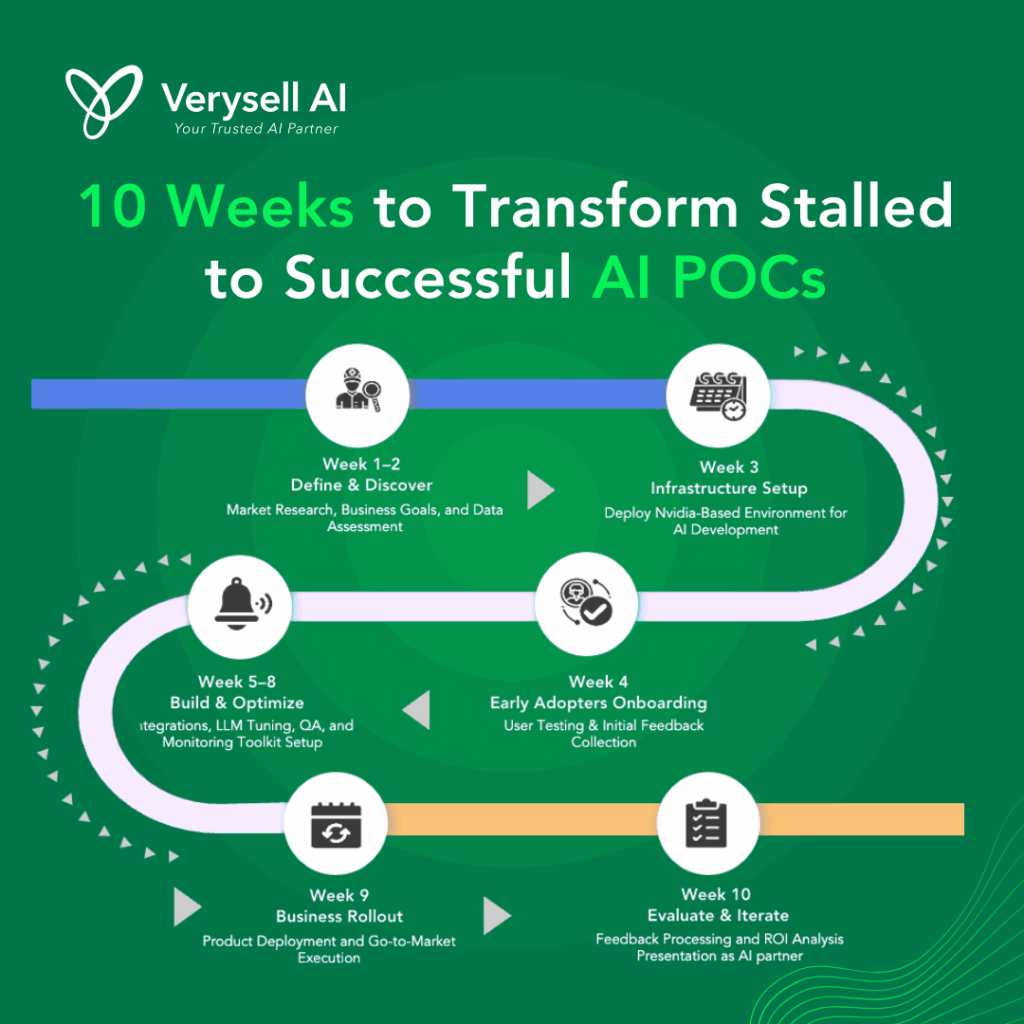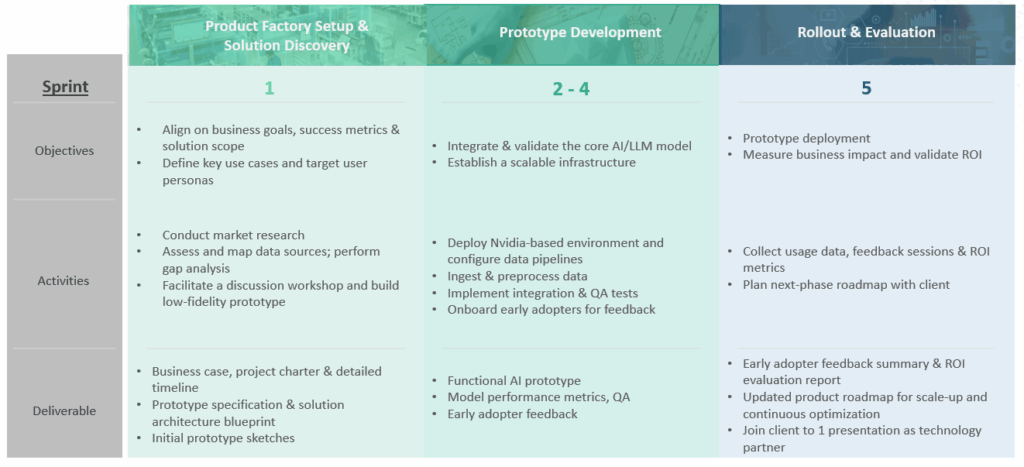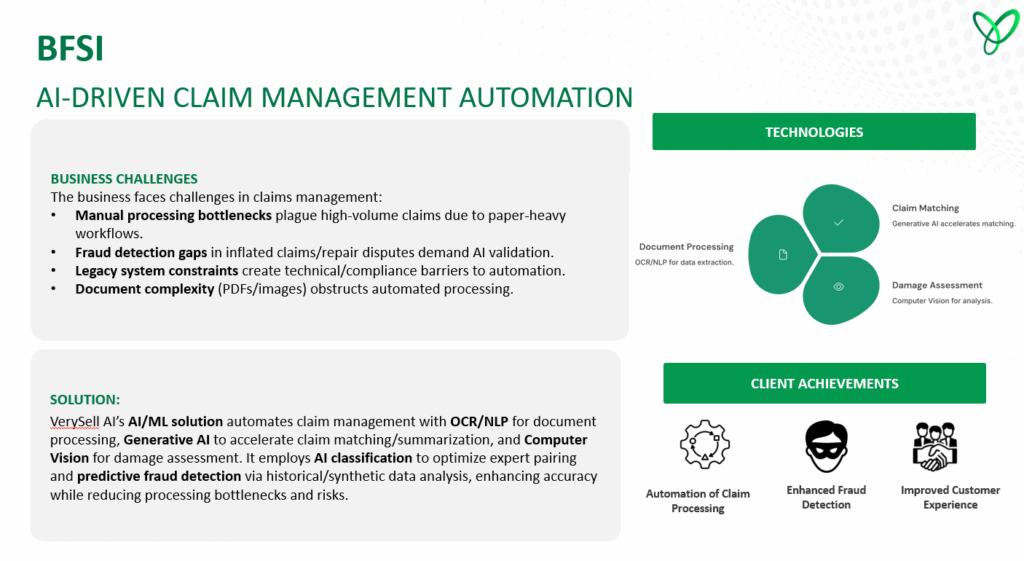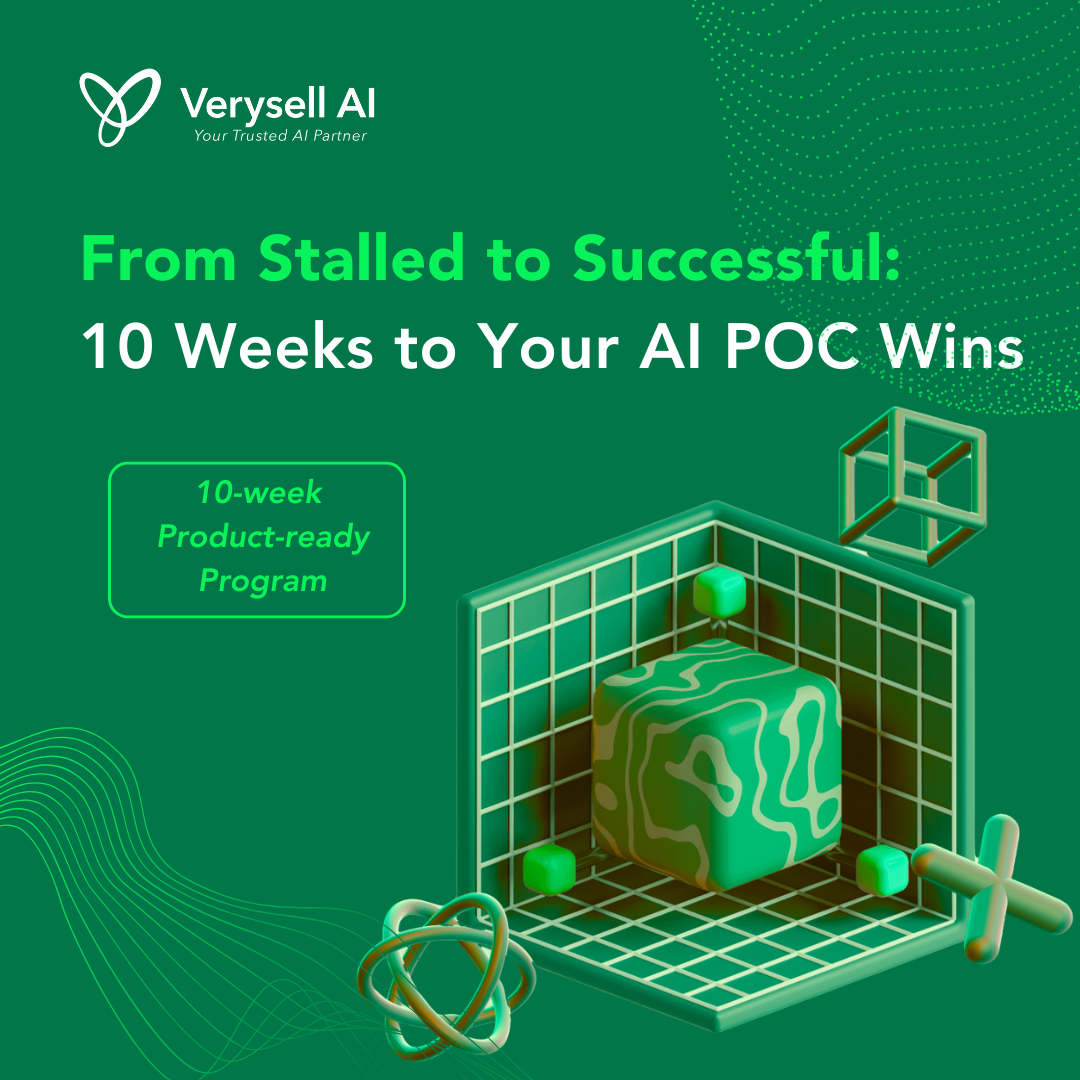Many AI POCs stall, leaving teams with prototypes that never deliver real impact. With Verysell AI’s 10-Week Sprint Model, you accelerate AI adoption by turning your POC into a product-ready solution fast. In just 10 weeks, your organization moves from stalled experiments to measurable ROI and AI that truly integrates with business workflows.

1. The Broken Promise of AI Pilots
If you’ve ever run an AI proof of concept (AI POC), you know how the story often goes. Excitement builds around a new use case, budgets are allocated, a team of data scientists is pulled together, and after months of experimentation… the POC quietly stalls.
The AI model might technically work, but it doesn’t connect with business workflows. Or the data pipeline isn’t ready. Or leadership loses patience waiting for results. By the time the project is production-ready, the market has shifted, and the solution is already outdated.
This isn’t a rare problem. Studies show that more than 80% of AI projects fail to achieve their intended goals, according to a report by Rand Corporation. The reasons vary from a lack of proprietary data, poor alignment with business needs, to the infamous “pilot purgatory” where POCs never scale. But at the core, the issue is this: proof of concept is not the same as proof of value.
And yet, this is the trap most enterprises find themselves in.
2. Why 10 Weeks Can Make a Change?
The AI POC stage should be more than an experiment. It should deliver a usable, product-ready solution that proves business value quickly. Otherwise, you’re sinking time and money into prototypes that never see the light of day.
Think about the usual enterprise AI journey. Teams spend months aligning on scope, debating data readiness, setting up infrastructure, and conducting endless model experiments. By the time adoption is discussed, the project has lost momentum and executive sponsorship.
The 10-week sprint forces clarity. You and your stakeholders must define success early, focus on the highest-value use cases, and test adoption with real users before the solution is finalized.
In other words, constraints become your competitive advantage. They prevent you from over-engineering, and they keep everyone accountable to one outcome: delivering a functional, impactful AI product in weeks, not years.
3. Inside the Sprint
The sprint is more than a process. It’s a culture shift. Here’s how it feels when you work with us:
- Co-creation from Day 1: You don’t hand off requirements and wait for updates. Instead, our engineers and consultants work side by side with your team to define business goals, success metrics, and target personas.
- Parallel execution: Strategy, data readiness, and model development don’t happen in isolation. They move forward together, so progress is visible from the first two weeks.
- Early adoption testing: Instead of saving user testing for the end, we integrate feedback loops mid-sprint. That means you’re not just validating technical accuracy. You’re validating usability and impact.
- ROI as a deliverable: At the end of 10 weeks, you don’t just get a prototype. You get performance metrics, adoption feedback, and a roadmap that quantifies business value.
This way, you never end up with an AI demo that looks good in a presentation but fails in the real world.

4. What Makes the 10-Week Program Different?
Plenty of vendors claim to move fast. But speed alone doesn’t guarantee adoption. What sets our sprint model apart is a combination of adoption-first design and impact-driven delivery.
- Adoption-first: We prioritize user-friendly interfaces, embedded business logic, and workflow integration from the start. AI is only valuable if people actually use it.
- Impact-driven: Every sprint is anchored on ROI. From downtime reduction to process efficiency, we measure outcomes that matter to your bottom line.
- Deep expertise, compressed cycle: Our 30+ AI engineers, data scientists, and domain experts have worked across industries from manufacturing to BFSI, so we know how to accelerate without cutting corners.
- Co-pilot, not vendor: We don’t just drop in technology. We act as your AI adoption partner, guiding strategy, implementation, and scaling beyond the sprint.
This approach ensures you’re not just experimenting with AI. You’re adopting it.
4.1. The 10-Week Journey at a Glance
So what does a sprint actually look like? Here’s how the 10 weeks typically unfold:
- Weeks 1-2: Define & Discover
Together, we align on business goals, target personas, and success metrics. We conduct data assessments and build low-fidelity prototypes to visualize the solution early. - Week 3: Infrastructure Setup
We deploy a high-performance AI environment (Nvidia-based), configure data pipelines, and prepare for model integration. - Weeks 4-5: Prototype Development
Core models are integrated, tested, and deployed into a functional prototype. Usability and business alignment guide every iteration. - Weeks 6-8: Rollout & Feedback
Early adopters are onboarded to test the solution in real-world workflows. Their feedback drives refinements in usability, accuracy, and adoption strategy. - Weeks 9-10: ROI Validation & Roadmap
You receive an ROI evaluation report, adoption metrics, and a roadmap for scaling. The sprint doesn’t end in “pilot purgatory”. It ends in proof of value.
This structure isn’t rigid. Each sprint is tailored to your objectives, data readiness, and organizational needs. But the outcome is always the same: a product-ready AI solution that proves value and paves the way for scale.
4.2. Proof in Practice
The sprint model isn’t just theory. It’s been tested in the field.
- In manufacturing, a global client struggled with unplanned machine downtime, costly defect rates, and a shortage of skilled maintenance personnel. Within weeks, Verysell AI deployed an AI-powered maintenance agent that combined natural language understanding, real-time sensor data, and historical maintenance records. The results? A 44% reduction in downtime, 54% fewer defects, and 29% fewer lost sales.
- In insurance, manual claims processing caused bottlenecks and fraud detection gaps. Verysell AI’s sprint delivered an AI-driven claims automation system that used OCR and NLP for document handling, computer vision for damage assessment, and predictive AI for fraud detection. The system dramatically reduced processing time while improving accuracy, creating both operational efficiency and customer trust.

These aren’t pilots sitting on a shelf. They’re live, adopted, and delivering measurable ROI.
5. Benefits of the Sprint Model
By now, you might be wondering: why does the sprint work when traditional approaches don’t?
Here’s the simple answer:
- It makes time-to-market your competitive edge: Instead of lagging behind, you’re leading with fast, validated solutions.
- It minimizes sunk cost: You don’t invest years before realizing a project isn’t viable. You know in 10 weeks.
- It bridges the strategy – execution gap: Business leaders and technical teams move together instead of in silos.
- It creates a repeatable playbook: Once you’ve done one sprint, you can run more scaling AI adoption across use cases.
In short, the sprint model helps you break out of the cycle of failed POCs and build a culture of rapid, ROI-driven AI adoption.
Don’t Let Your AI POCs Get Stuck in Pilot Purgatory
If you’ve been frustrated by AI POCs that drag on without impact, you’re not alone. The majority of enterprises have been there. But the story doesn’t have to fail.
With the right partner, you can go from uncertainty to adoption, from “proof of concept” to proof of value in just 10 weeks. That’s what Verysell AI’s sprint model delivers. Not a prototype. Not a demo. But a working, product-ready AI solution that your people can use and your business can measure.
So the question is: what could your organization achieve in the next 10 weeks?
Ready to find out? Explore the 10-Week Product-Ready AI Program or book a call and let’s make your AI real.
Or if you want to be explained in more detail about the 10-week product-ready program, check out our Webinar: “Why Your Enterprise AI POCs Keep Failing and How to Fix It?”


